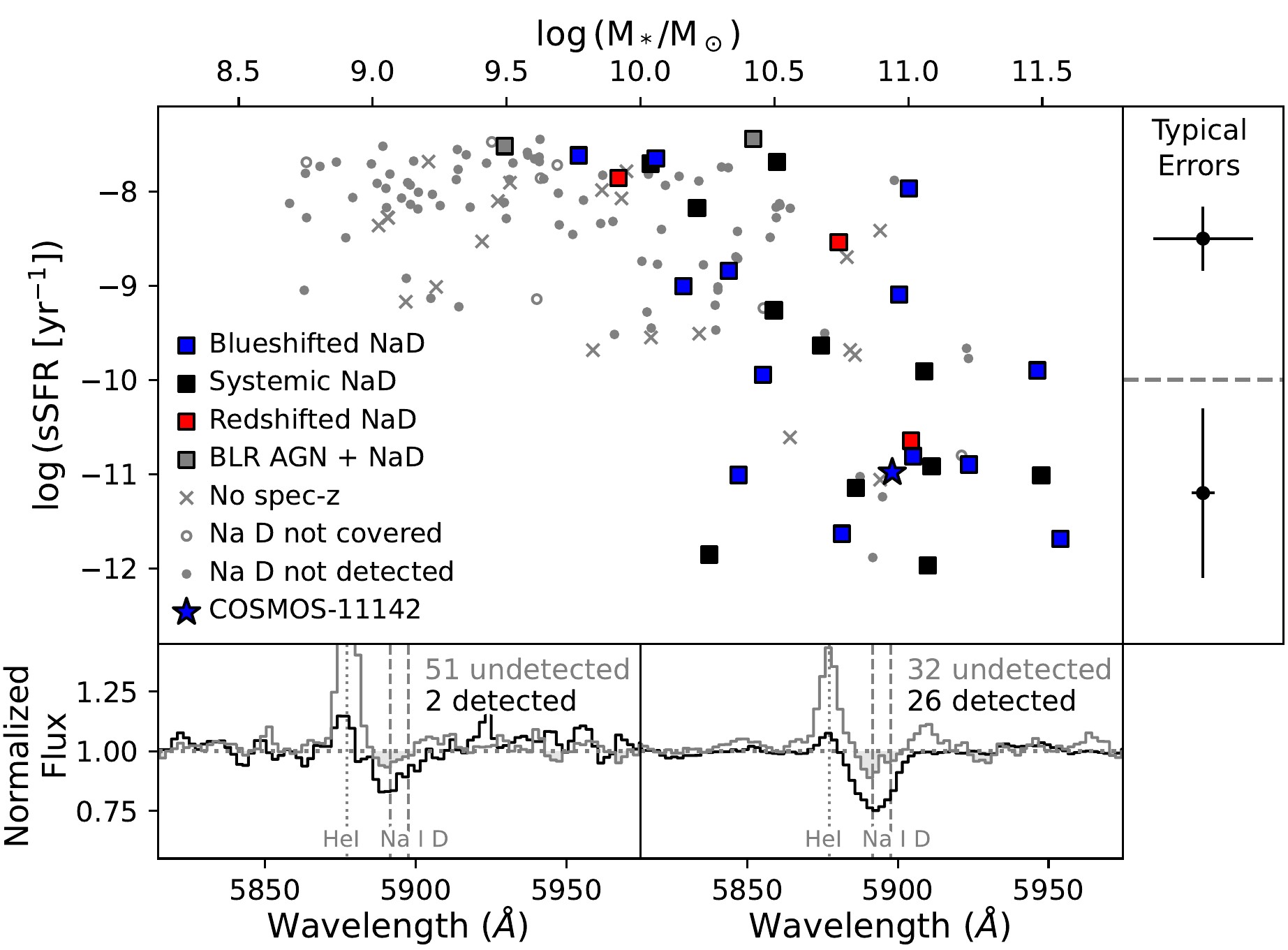JWST Reveals Widespread AGN-Driven Neutral Gas Outflows in Massive z~2 Galaxies
Outflows are known to be ubiquitous in massive z~2 galaxies. However, their role in regulating star-formation and galaxy growth is heavily debated. Studies based on ionized gas emission lines suggest that most AGN-driven outflows eject gas slower than it is consumed by star-formation, and therefore cannot be a major driver of star-formation quenching. A key caveat to this conclusion is that ionized gas emission lines may only probe the tip of the iceberg when it comes to the total mass being ejected from galaxies. Simulations and observations of nearby outflows suggest that colder (neutral and molecular) phases may actually carry the bulk of the ouflowing mass.
JWST has made it possible for the first time to observe Na I D absorption in the spectra of distant galaxies, providing a means to probe the bulk of the mass in distant outflows. In Belli, Park, Davies et al. 2023, we identified a post-starburst galaxy with an AGN-driven outflow detected in both ionized gas emission lines (e.g. [OIII]) and Na I D absorption. In this galaxy, the neutral outflow appears to carry 100x more mass than the ionized outflow and is ejecting gas from the galaxy faster than it is being consumed by star-formation. This provides tantalizing evidence to suggest that AGN-driven outflows may indeed by an important process leading to rapid quenching of star-formation.
Motivated by this result, we explored the properties of Na I D outflows across the entire galaxy population in Davies et al. 2024. We found that neutral gas outflows are present in at least 25% of galaxies with log(M*/Msun) > 10, with similar indicidence rates in both star-forming and quenching systems. Galaxies with strong Na I D absorption are characterised by AGN-like emission line ratios. The outflows from the lowest star-formation rate galaxies are removing gas much faster than it is consumed by star-formation, suggesting that AGN-driven ejection of cold gas may indeed be a dominant mechanism for fast quenching of star formation at z~2.

